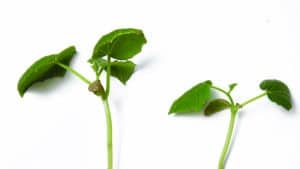Biostimulants are one of the most talked-up topics in agriculture today, and for good reason. Biostimulants are a more natural, more sustainable crop enhancement than conventional chemical options. Of late, plant and micro-based biostimulants are gaining traction in the marketplace because the products themselves are becoming more robust and effective, and the supporting data proves multiple modes of action. This, however, is where the complexity, and, yes, the simplicity – of these products comes to the fore.
Biostimulants are substances or microorganisms that, when applied to seeds, plants, or on the rhizosphere, stimulate a plant’s natural processes, thereby enhancing growth or yield via better nutrient uptake, improved nutrient use efficiency, greater stress tolerance, and/or higher crop quality and yield.
Biostimulants are very abundant and come in a whole range of forms: some new to agriculture, some well-known and well-used. Enzymes, proteins, amino acids, micronutrients, and other compounds can all function as biostimulants.
The complexity comes because no reaction or change in a plant happens in isolation. The processes involved in biostimulation aren’t as simple as turning something on or off. Rather, there are cascade reactions, subtle balances in ratios, and interrelated systems at play. Biostimulant products will never be as easy as their chemical counterparts to understand because they work within the complex systems of the growing plant, which itself has ever-changing needs.
Some farmers have asked me why anyone would choose to use biostimulants. If the process of growing is natural, they argue, why would a plant need stimulation to grow? While plants are resilient in their native settings, agriculture often asks plants to produce in less than ideal and less than natural conditions. What plant adapted to a warm spring start would chose to begin its lifecycle in a cold, wet, early spring? What plant naturally adapted for space and diversity would choose to grow with literally millions of its own kind, all at the same time and in close proximity? In order to harvest a crop with the highest yields per acre, with monocultured consistency and homogeneity in ripeness, and on, at best- a three-year rotation, plants need every bit of support we can provide.
If we go deeper, both literally and figuratively, biostimulants can help achieve something that conventional chemistries have ‘undone’: some biostimulants can help repair the soils in which crops grow. For example, there is potential for new products to undo the acidification of soils, to add carbon, and to support a healthier rhizosphere.
With these kinds of potential benefits ahead, I’m very pleased and hopeful to see the agriculture industry beginning to embrace biostimulants and to invest in developing further products. I’m also pleased to see new and better regulatory processes helping to weed out some of the snake oils that have been marketed in the past.








